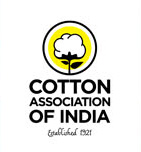Textile mills are complaining of an acute cotton shortage and consequent losses due to having to import it to meet the domestic scarcity and export commitments. The two public sector agencies, Cotton Corporation of India (CCI) and the National Agricultural Cooperative Marketing Federation of India (Nafed) procured around three million bales (170 kg each) of cotton through market intervention about four months earlier.
The quantity is equivalent to a little over a month of mill consumption. But the agencies have released hardly 20,000 bales since the procurement started in October last year. In these four months, however, the fundamentals have changed significantly, resulting in the domestic price rising higher than the global price. Yet, the ministry of textiles has not directed CCI and NAFED to release the quantity they procured.
"Textile mills, today, are facing around five mn bales of shortage, which is artificially created. Consequently, textile mills are forced to import, largely from West Africa," said Manikam Ramaswami, chairman of The Cotton Textiles Export Promotion Council (Texprocil). Various industry bodies, including the Confederation of Indian Textile Industry and the Apparel Export Promotion Council have urged the ministry to release the bought cotton.
According to trade sources, multinational corporations have also cornered a huge quantity of around three million bales. The shortage has reflected on cotton prices in the domestic market. The benchmark Shankar-6 in the spot market here has risen 8.4 per cent from Rs 34,600 a candy (356 kg each) on February 15 to Rs 37,500 a candy today. Ramaswami says the rising prices are increasing the cost of textile manufacturing unnecessarily, hitting profitability due to the thin two-three per cent margins the mills operate on.
Meanwhile, domestic textile mills have intensified import of cotton from West Africa and contracted for around 20,000 bales in the past three-odd weeks. As a result, import is expected to rise to two mn bales this year as compared to 1.2 mn bales last year. Indian textile mills have been paying a premium of at least five cents a pound premium for West African cotton over what could have been bought at home if CCI and Nafed released their stock. Exporters are also relying on import to meet the export commitment.
The Cotton Advisory Board (CAB) under the ministry has estimated 3.46 mn bales of carryover cotton stock in the 2012-13 season, substantially higher from the 2.86 mn bales the previous year. CAB forecast India's output at 33.4 mn bales in the current season, substantially lower than 35.3 mn bales in the previous one. Mill consumption of cotton has also been estimated higher at 23 mn bales this year from 21.7 mn last year.
On yarn, Ramaswami said export registration of the raw material had stopped due to the cotton shortage. He hoped the situation would normalise after the West African cotton import gets over, expected in about 40 days. By then, there would be an unrecoverable loss of around $1 bn, he said. (Source: Business Standard)
